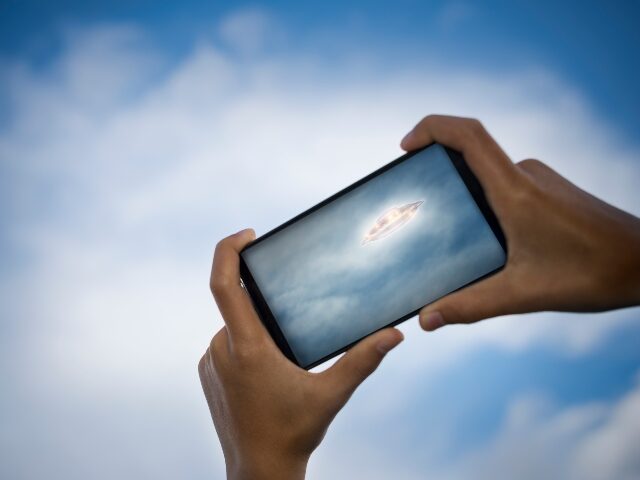NASA has announced it will study UFOs using AI, machine learning, and crowdsourcing in its first-ever study into alleged UFO sightings.
“The panel finds that artificial intelligence (AI) and machine learning (ML) are essential tools for identifying rare occurrences, potentially including UAP, within vast datasets,” NASA said in its 33-page report, published Thursday.
The government refers to UFOs as UAPs, which means “unidentified aerial phenomena.”

The image from video provided by the Department of Defense labelled Gimbal, from 2015, an unexplained object is seen at center as it is tracked as it soars high along the clouds, traveling against the wind. “There’s a whole fleet of them,” one naval aviator tells another, though only one indistinct object is shown. “It’s rotating.” The U.S. government has been taking a hard look at unidentified flying objects, under orders from Congress, and a report summarizing what officials know is expected to come out in June 2021. (Department of Defense via AP)
“These methodologies, combined with NASA’s extensive experience and expertise, should be utilized to investigate the nature and origins of UAP by examining data from sources such as satellites and radar systems,” the report continued.
“However, the effectiveness of AI and ML in studying UAP depends critically upon the quality of the data used to train the AI and in subsequent analysis,” NASA added. “At present, UAP analysis is more limited by the quality of data than by the availability of techniques. As a consequence, it is a higher priority to obtain better quality data than it is to develop new analysis techniques.”
NASA also said it will use crowdsourcing as a means for studying UFOs. Author Jeff Howe, who coined the term crowdsourcing, defines it as: “the act of a company or institution taking a function once performed by employees and outsourcing it to an undefined (and generally large) network of people in the form of an open call.”
“Engaging the public is also a critical aspect of understanding UAP,” the report read.
The agency added that it sees “several advantages to augmenting data collection efforts using modern crowdsourcing techniques, including open-source smartphone-based apps that simultaneously gather imaging data and other smartphone sensor metadata from multiple citizen observers worldwide.”
“NASA should therefore explore the viability of developing or acquiring such a crowdsourcing system as part of its strategy,” the report asserted, adding that there should also be a “standardized system for making civilian UAP reports.”
The report added that there are “several advantages to augmenting potential data collection efforts using modern crowdsourcing techniques, including open-source smartphone-based apps that simultaneously gather imaging data and other smartphone sensor data from multiple citizen observers.”
“NASA should therefore explore the viability of developing or acquiring such a crowdsourcing system as part of a future data strategy,” the agency said, adding that “public engagement” in the study of UFOs is “vital.”
As Breitbart News reported, NASA’s first-ever study into the hundreds of alleged UFO sightings in recent decades also found that there is “no reason” to believe any of them are aliens.
“At this point there is no reason to conclude that existing UAP reports have an extraterrestrial source,” NASA’s report read.
You can follow Alana Mastrangelo on Facebook and Twitter at @ARmastrangelo, and on Instagram.

COMMENTS
Please let us know if you're having issues with commenting.